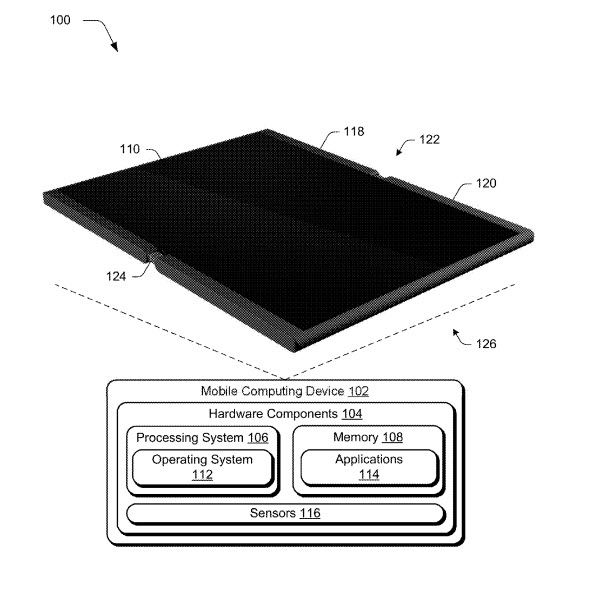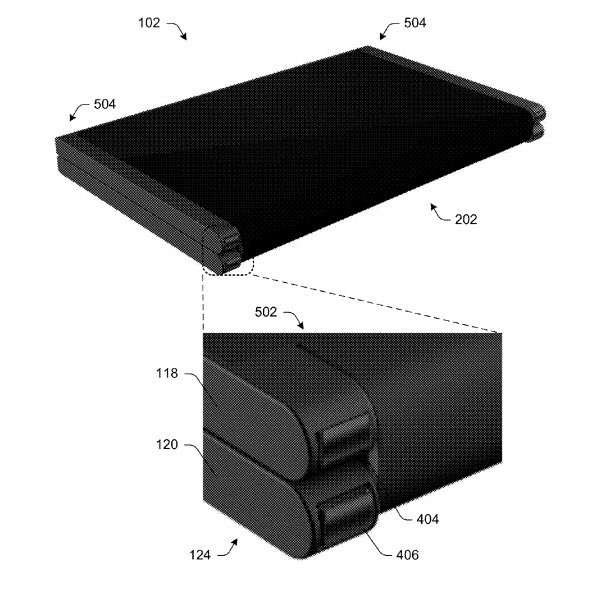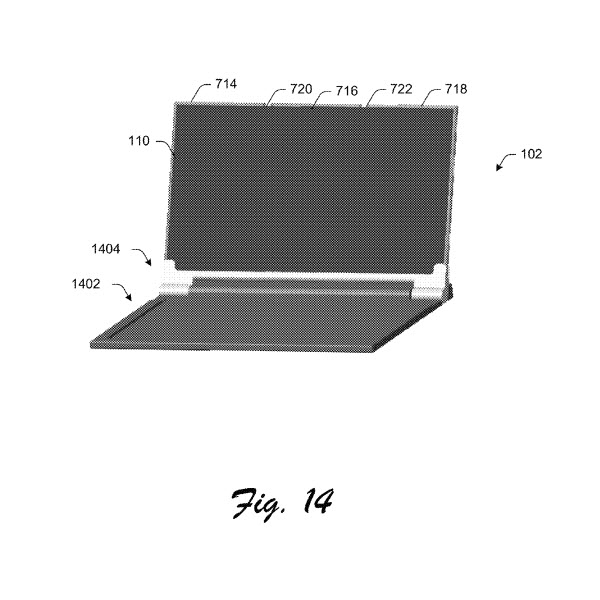
Ultimately, the change fits Microsoft’s “Windows everywhere” mantra, with the complete PC experience available on everything from the smallest phone-like devices all the way up to the massive Surface Hub. One of the company’s recent patent approvals, namely for a device that morphs from a phone into a tablet, as MSPoweruser reports, would fit that paradigm perfectly.
Patent number US 9,541,962 aims to accomplish what a number of other companies, such as LG and Samsung, are already looking at — smartphones with foldable screens that can open up into a more tablet-like experience. Such a device would provide the portability of a smartphone along with the enhanced productivity of a larger screen, and when paired with Windows 10 on ARM would give Microsoft a significant competitive advantage over iOS and Android.
The patent itself describes a number of device types that are pretty generic in terms of foldable mobile devices, with dual and triple hinges and a variety of screen sizes. According to Microsoft’s description, “Mobile computing devices may be found in a variety of form factors, such as a tablet, a mobile communications device (e.g., a phone), and so forth. As these form factors are optimized for mobile use, a size of the device becomes a primary consideration in its design and implementation as well as in a choice made by a consumer as to which device to purchase.”
However, because Windows 10 already includes Continuum, a technology that adjusts the user interface for the screen size and enables full use of external displays, keyboards, and mice, Microsoft’s patent actually describes not just a 2-in-1 device but rather potentially a 3-in-1 device. It could be a person’s single PC that provided every conceivable form factor experience from a smartphone to a tablet to a “real” PC complete with multiple displays and full peripheral support.
Of course, companies file far more patent applications than the products they actually bring to market. But Microsoft fully intends to push the mobile experience into new directions with a category-creating Surface phone sometime in 2017 or 2018 and this kind of technology could be key to making something truly innovative.




